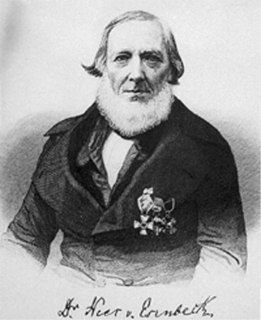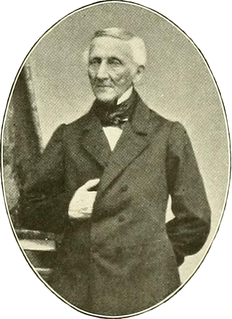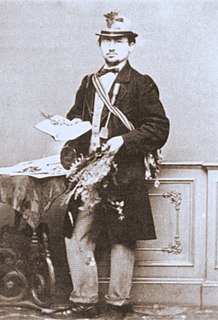Carl Ernst August Weihe (1779–1834) was a German botanist and physician.
Weihe was born on 30 January 1779 at Mennighüffen, the second of 12 children born to KarlJustus Weihe (1752-1829), a pastor, and his wife Anna (née Rebeker). As he later described himself as "Mindensis", it is probable that he received his schooling at the Gymnasium in Minden. Weihe was apprenticed to a pharmacist in Bielefeld, before attending the university at Halle, where he studied medicine and botany, receiving his doctorate in September 1802. He worked as a doctor at Lüttringhausen (near Remscheid) and Bünde, before moving back to Mennighüffen, where he established a small botanical garden on land owned by his father. In 1822, Weihe moved to Herford, where his children were at school, and where he died in 1834. [1] [2]

Gymnasium, in the German education system, is the most advanced of the three types of German secondary schools, the others being Realschule and Hauptschule. Gymnasium strongly emphasizes academic learning, comparable to the British grammar school system or with prep schools in the United States. A student attending Gymnasium is called a Gymnasiast. In 2009/10 there were 3,094 gymnasia in Germany, with c. 2,475,000 students, resulting in an average student number of 800 students per school.

Minden is a town of about 83,000 inhabitants in the north-east of North Rhine-Westphalia, Germany. The town extends along both sides of the River Weser. It is the capital of the district (Kreis) of Minden-Lübbecke, which is part of the region of Detmold. Minden is the historic political centre of the cultural region of Minden Land. It is widely known as the intersection of the Mittelland Canal and the River Weser. The town is over 1,200 years old and has yet some buildings in the Weser Renaissance style, in addition to its architecturally symbolic 1,000-year-old cathedral.
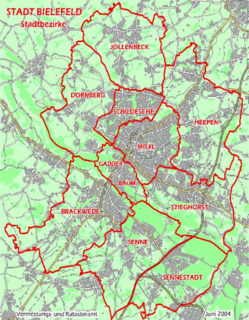
Bielefeld is a city in the Ostwestfalen-Lippe Region in the north-east of North Rhine-Westphalia, Germany. With a population of 341,730, it is also the most populous city in the Regierungsbezirk Detmold.
During his career Weihe described some 160 new plant species. In particular, he made important contributions to the study of the genus Rubus . Weihe was the first to realise that the bramble, Rubus fruticosus , was not in fact a single species but a complex of similar species; among specimens collected in the vicinity of his home at Mennighüffen he distinguished 18 separate species. Between 1822 and 1827, Weihe and his collaborator, Christian Gottfried Nees von Esenbeck, a taxonomic botanist, published a monograph of the German brambles, Rubi Germanici descripti et illustrati, in which they described 49 species of Rubus . [3]
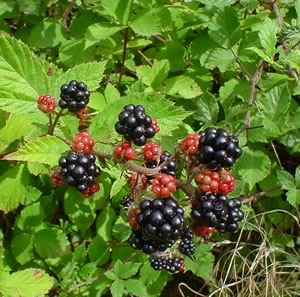
Rubus is a large and diverse genus of flowering plants in the rose family, Rosaceae, subfamily Rosoideae, with 250–700 species.
Rubus fruticosus L. is the ambiguous name of a European blackberry species in the genus Rubus in the rose family. The name has been interpreted in several ways:
The genus Weihea (now treated as a synonym of Geissorhiza ) [4] was named in his honour.

Geissorhiza is a genus with 103 species described to date of deciduous perennial flowering plants in the iris family first described as a genus in 1803. The entire genus is endemic to Cape Province of western South Africa. The genus name is derived from the Greek words geisson, meaning "tile", and rhizon, meaning "root".
